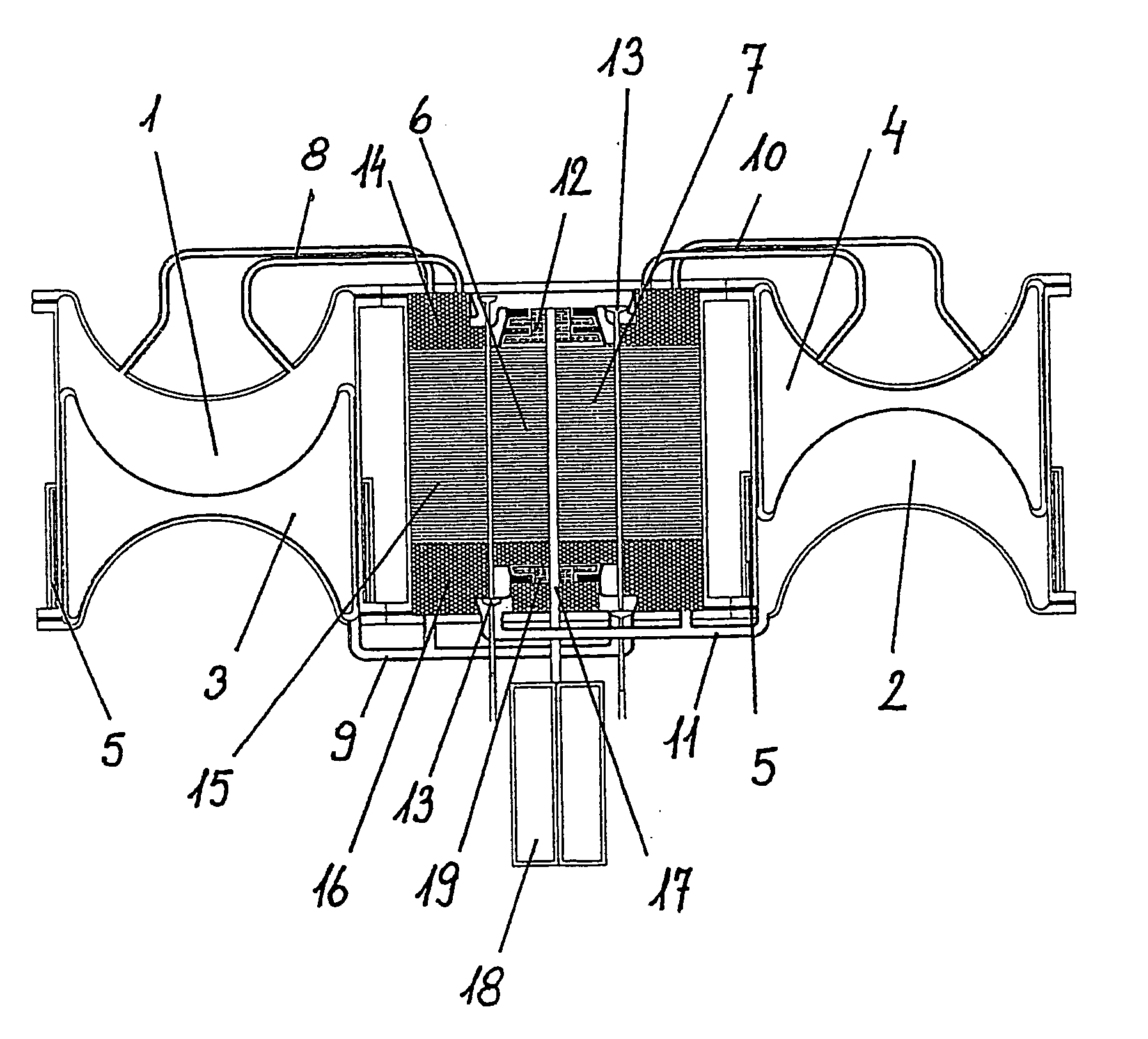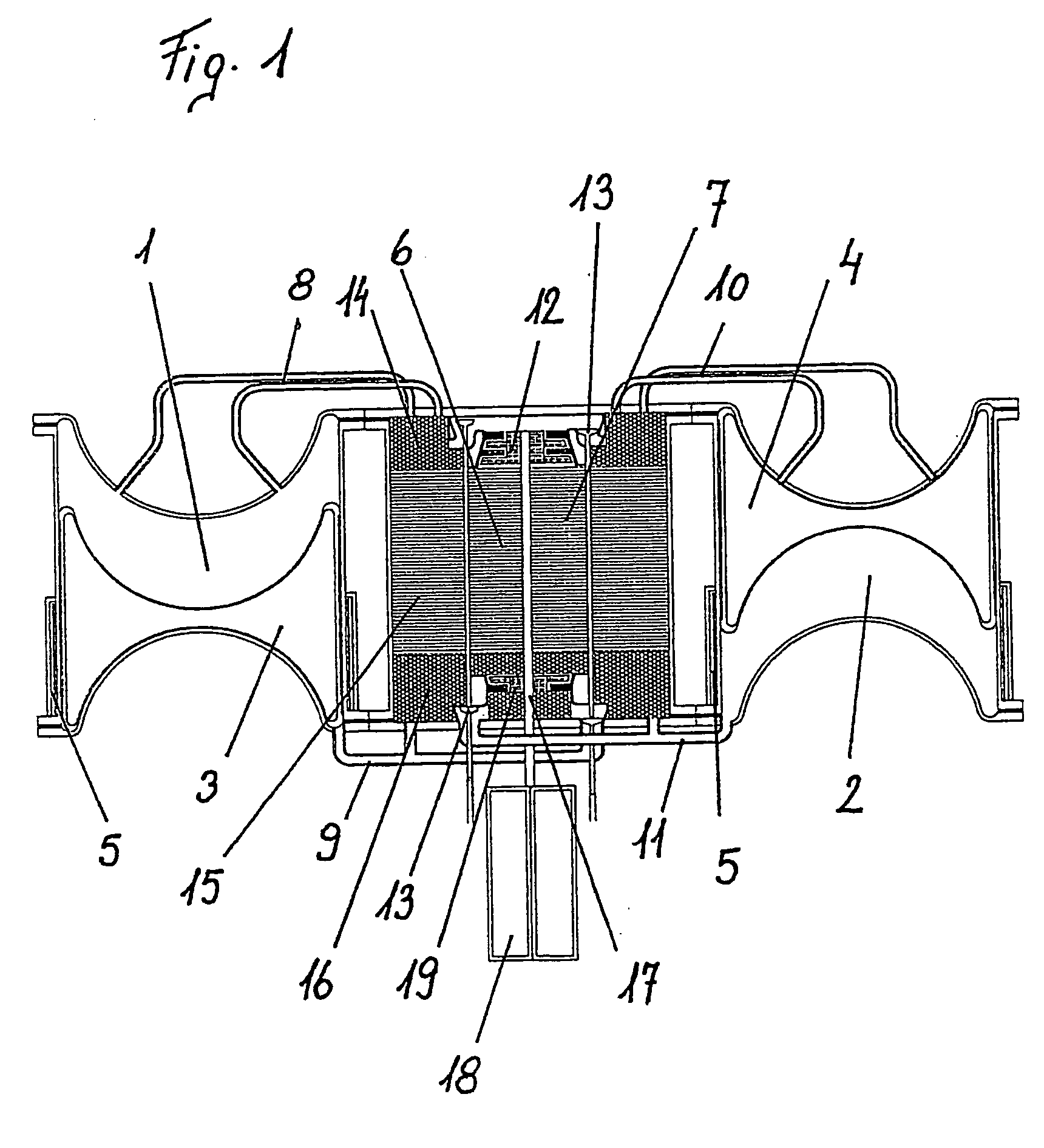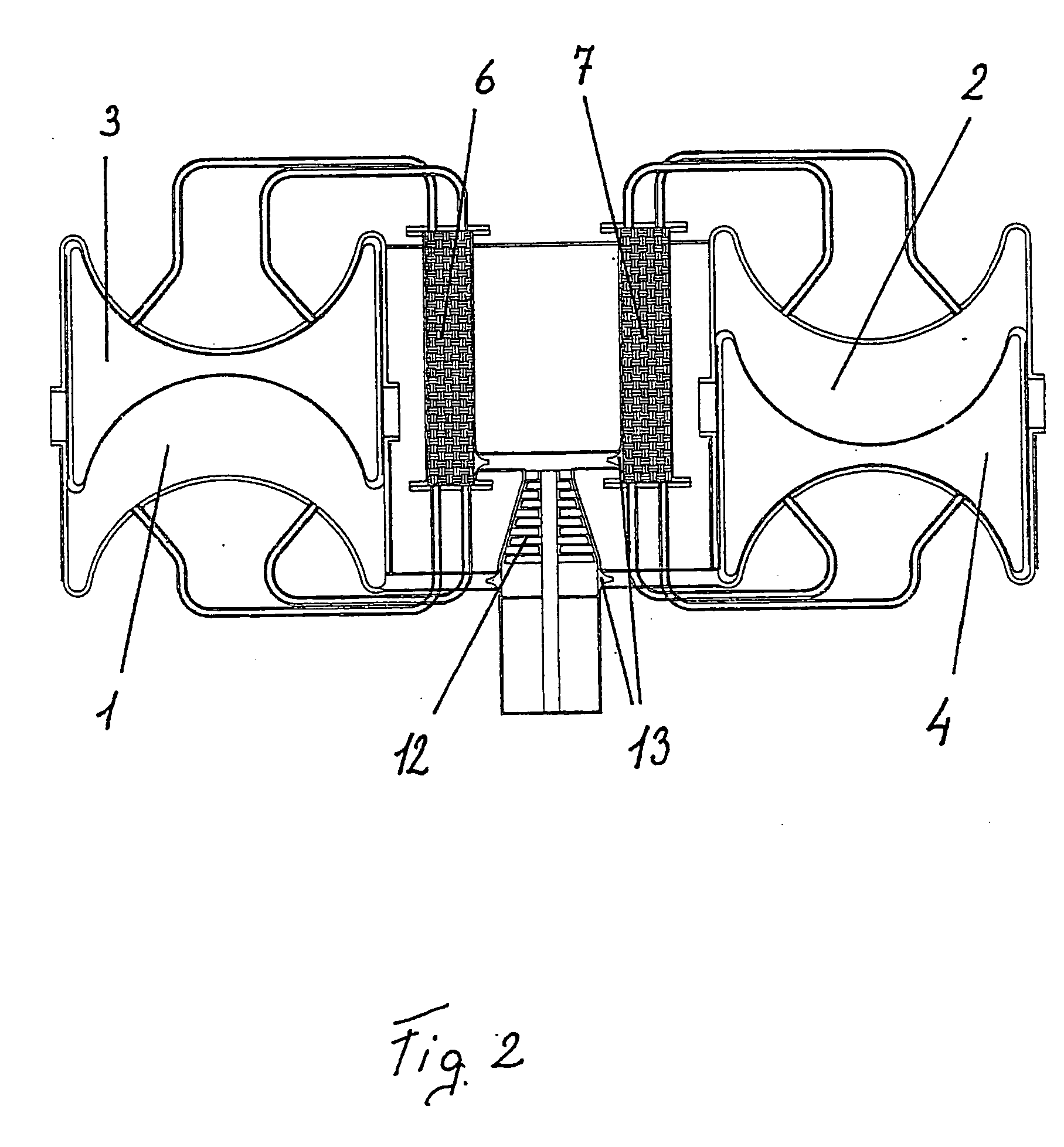Method and device for converting thermal energy into kinetic energy
a technology of thermal energy and kinetic energy, which is applied in the direction of closed-cycle machines/engines, hot gas positive displacement engine plants, etc., can solve the problems of low overall efficiency, energy loss, and not very suitable for light or cold refrigerators
- Summary
- Abstract
- Description
- Claims
- Application Information
AI Technical Summary
Benefits of technology
Problems solved by technology
Method used
Image
Examples
Embodiment Construction
[0087] By way of introduction, it is noted that in the described embodiment the same parts and the same states are allocated the same reference numbers and the same component names, whereby the disclosures contained throughout the description can be applied by analogy to the same parts and the same states with the same reference numbers or same component names.
[0088]FIG. 1 shows a device using a medium for conversion of thermal energy into kinetic energy which has two enclosed chambers 1, 2. Each chamber 1, 2 is divided by a movable displacer 3, 4 into two sections, namely an expansion chamber and a compression chamber. Each displacer 3, 4 can be moved by a drive 5, which can be, in particular, a linear drive. Each chamber 1, 2 has a regenerator 6, 7 allocated to it. Both sections of the chambers 1, 2 are connected to regenerators 6, 7 via pipes 8, 9 and 10, 11.
[0089] One section, i.e., the expansion chamber, of each chamber 1, 2 is connected to a work machine 12. The expansion ch...
PUM
 Login to View More
Login to View More Abstract
Description
Claims
Application Information
 Login to View More
Login to View More - R&D
- Intellectual Property
- Life Sciences
- Materials
- Tech Scout
- Unparalleled Data Quality
- Higher Quality Content
- 60% Fewer Hallucinations
Browse by: Latest US Patents, China's latest patents, Technical Efficacy Thesaurus, Application Domain, Technology Topic, Popular Technical Reports.
© 2025 PatSnap. All rights reserved.Legal|Privacy policy|Modern Slavery Act Transparency Statement|Sitemap|About US| Contact US: help@patsnap.com



